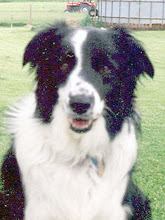Thursday, August 26, 2010
The County Fair: The Poultry Barn
When we walk into the poultry barn, we see the history of poultry production over the past 100 years.
On one side are the white chicken and turkey breeds used in today's factory farms. The birds are designed to grow fast (chickens go from hatched chick to dinner plate in seven weeks) and have feathers that are easy to pluck.
When I look at them, I see why some people call poultry dirty and disgusting. To grow that fast, they have to eat a lot and not move much. If they eat a lot, they also have a lot of waste. Feathers that are easy to pluck upon butchering also fall out when the birds are alive. Humans' desire for white meat and cheap food has created some messed-up breeds.
We walk past these birds to see the heritage or fancy breeds -- the ones that used to populate most family farms. The birds range from the small, but mighty bantam chickens, to the standard size birds like our Buckeyes, to the larger ones, like the black Jersey Giants. Colors range from white to buff to speckled to reds and blacks. These birds are more alert and active than their modern, white brethren. These birds are why so many fall in love with their backyard flocks.
As I look at the Speckled Sussex, the Barred Rocks, the feather-footed breeds, and the Buff Orphingtons, I realize that our Buckeyes, with their reddish-brown feathers and tiny combs, seem plain in comparison. But I like their demeanor, and they do great as free-range birds on the farm.
From the chickens, we move to the turkeys. The heritage, or old-style breeds, don't have the big heavy breasts of the white factory farm birds. Their colors range from reds to browns to black, and my favorites -- lilacs and blue slates.
I toy with the idea of adding turkeys to the farm. Then we move on to the geese, ducks and guineas.
Subscribe to:
Post Comments (Atom)













No comments:
Post a Comment